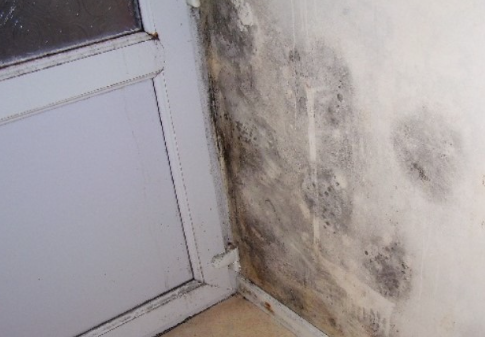Leaking pipes, rising damp on ground floors, or water seeping in due to roof damage, outside brickwork, or damaged window frames can cause damp and mould in the home.
Additionally, the warmer your home, the more moisture that can be held in the air. When the air is holding too much of this moisture and can’t hold any more, water droplets form on the colder surfaces.
Cooking, showering, and drying clothes indoors without adequate air circulating (for example, opening windows, etc.) can cause excess moisture. Droplets can form on indoor surfaces such as mirrors, windowsills, furniture, in cupboards and on walls, particularly when they’re cold.
Mould spores will eventually begin to grow on these surfaces if this water is not wiped away.
You can prevent the build-up of condensation by:
- Frequently emptying the water in your tumble dryers, putting lids on saucepans when cooking, and drying washing outside;
- Opening bedroom windows for 15 minutes each morning, allowing air to circulate and keeping your trickle vents open on your windows if you have them;
- Keeping your home is well insulated (please contact us if you feel that it is not);
- Heating your home at constant level (between 19 – 21c), allowing air to circulate around the home by leaving doors open slightly (unless you’re cooking or showering!);
- Opening the window, putting the extraction fan on and closing the door of the room being used if you are cooking, showering, or bathing.
- Try to avoid placing furniture right up against walls because this makes it difficult for air to circulate and encourages mould to grow (even on your furniture and inside your cupboards on clothes.)
More About Extraction Fans
Extraction fans are designed to work for several minutes even after being switched off, some even remain on at all times to provide a background ventilation. This is important as moisture will remain in the air after bathing or showering. If repairs have been carried out to fix leaks, heating and ventilating the rooms effects may still be needed for a few weeks afterwards to dry out any remaining water. You can always contact us if you’d like some more advice on how best to do this.




